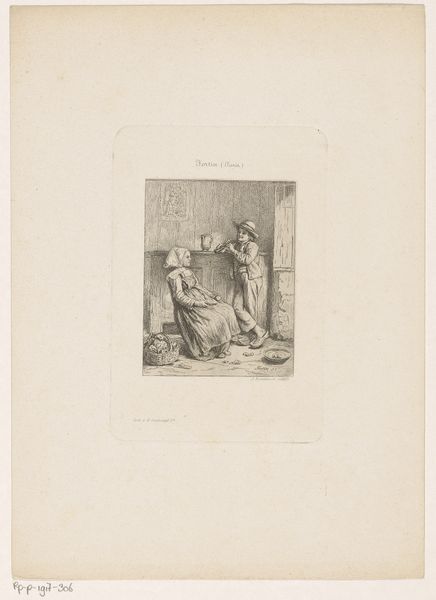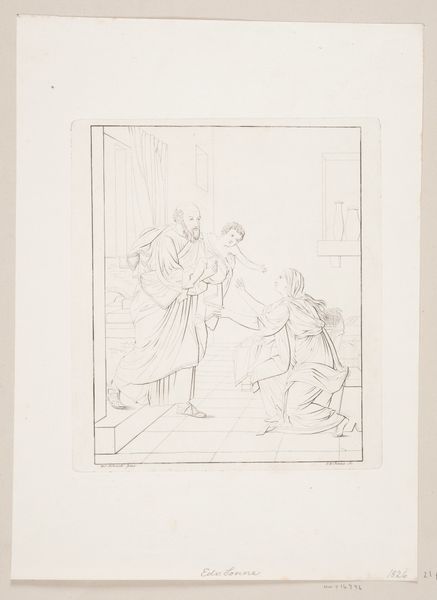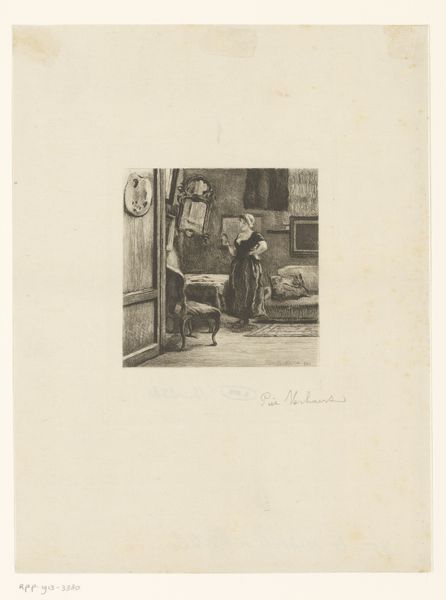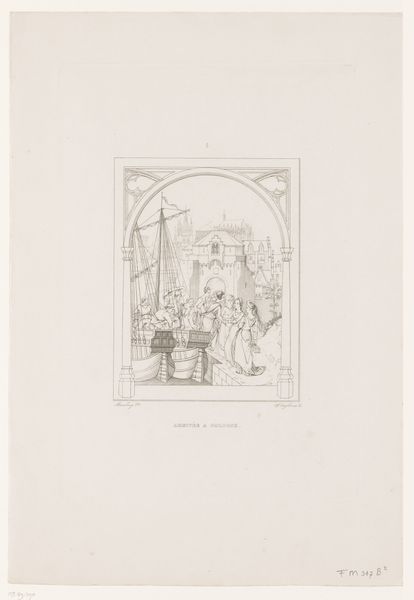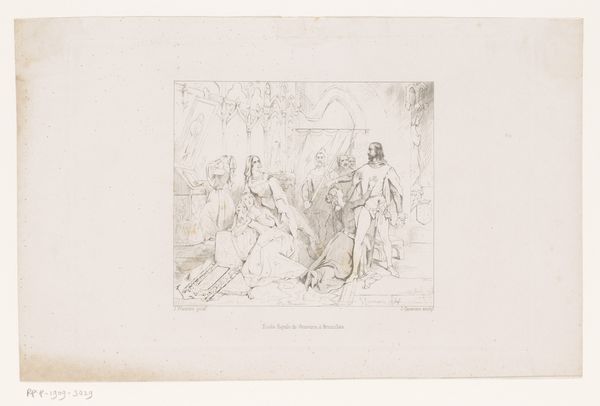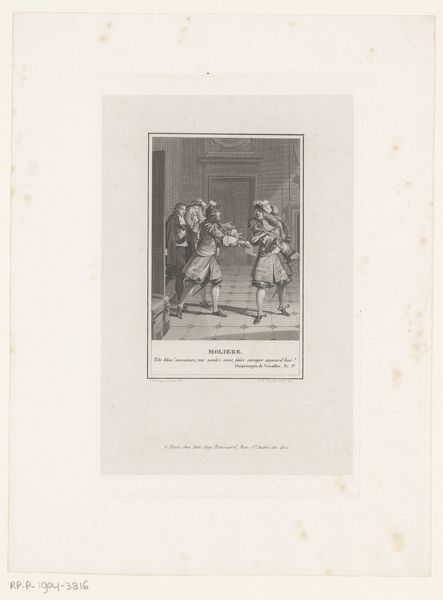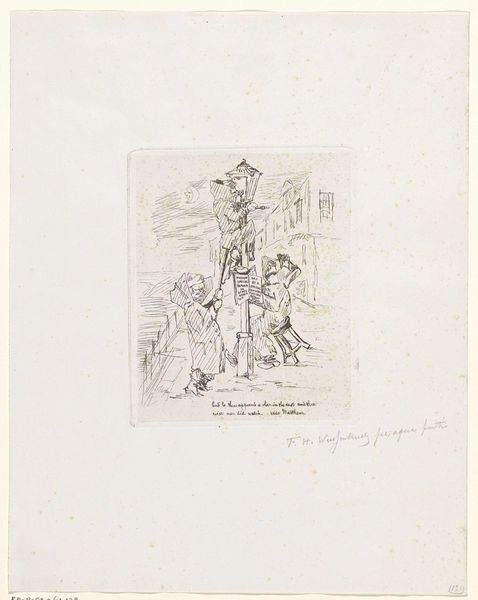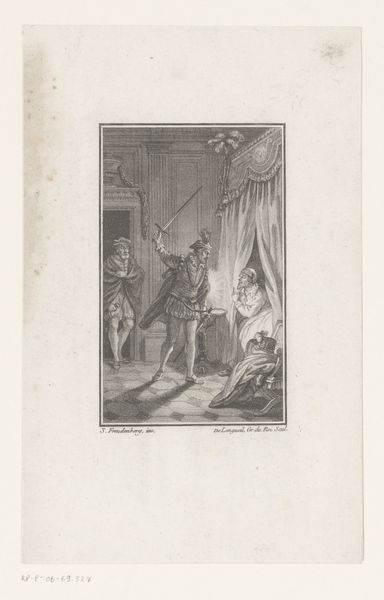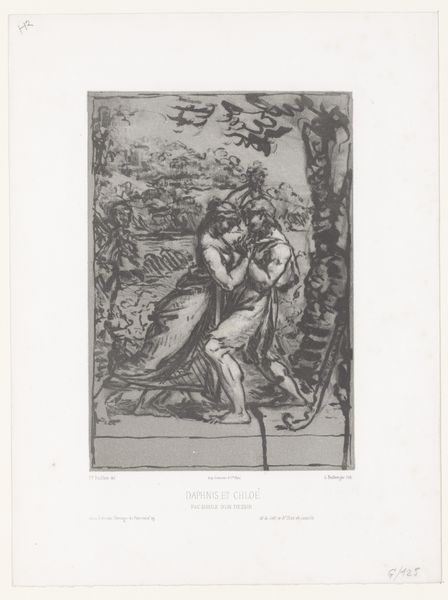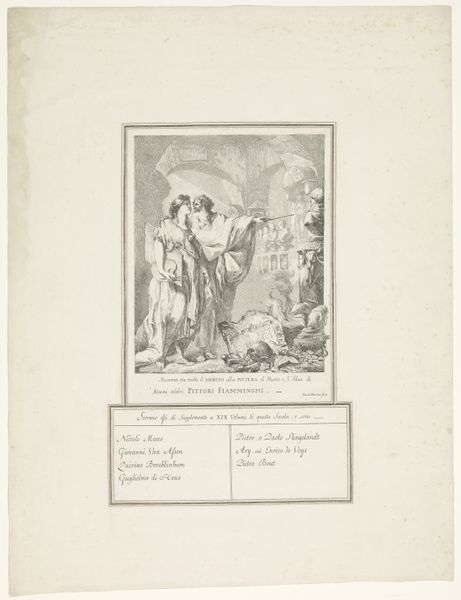
engraving
#
portrait
#
old engraving style
#
personal sketchbook
#
romanticism
#
line
#
history-painting
#
academic-art
#
engraving
Dimensions: height 289 mm, width 179 mm
Copyright: Rijks Museum: Open Domain
Curator: Louis Gallait, a towering figure in Belgian Romanticism, completed this engraving in 1837. Titled "Michel Eyquem de Montaigne bezoekt Torquato Tasso", it's currently held at the Rijksmuseum. Editor: The immediate impression is one of melancholy. The sparse lines contribute to a feeling of constraint, almost like a psychological study etched in monochrome. The balance seems to deliberately pit the actively dynamic duo against the isolated, seated figure. Curator: Indeed. Gallait places us within the narrative of the celebrated essayist Michel de Montaigne visiting the ailing poet Torquato Tasso during his confinement. It prompts reflection on the intellectual exchange and its implied power dynamics, especially in considering their cultural identities and roles during the Renaissance. It subtly explores themes of isolation, genius, and the sociopolitical constraints of the time. Editor: Focusing on purely formal aspects, note the sharp contrast achieved through the line work; denser strokes create shadowed depths. And what about that stark negative space? Gallait positions the men off-center, further emphasizing Tasso's dejection, while our attention gets directed through subtle gradations achieved via calculated lines. The medium itself, an engraving, imposes restraint—very apropos considering our theme. Curator: Considering your observations about form, and reflecting more critically, one could suggest the line work mimics the social boundaries circumscribing Tasso—that he is not just in a physical cell, but imprisoned within social and academic expectations of his era. In terms of modern analysis, we also have to consider the inherent politics in depicting a presumably neurodivergent individual—Tasso was possibly bipolar—as fundamentally tormented. Editor: So the artistry serves both as vehicle of expression as well as silent commentary. The interplay between figures, highlighted by light and shade and compositional organization of figures allows the audience to engage directly with not only subject, but broader, human emotions too, while remaining anchored and reflective to the physical qualities and structures by the use of calculated linework and placement, which elevates an anecdotal vignette, really into a contemplation regarding what it is to have awareness of ourselves and circumstance. Curator: Precisely. It bridges the personal plight with the larger theater of power and social perceptions, even in the marks left behind. It leaves us contemplating on what liberty actually consists.
Comments
No comments
Be the first to comment and join the conversation on the ultimate creative platform.
